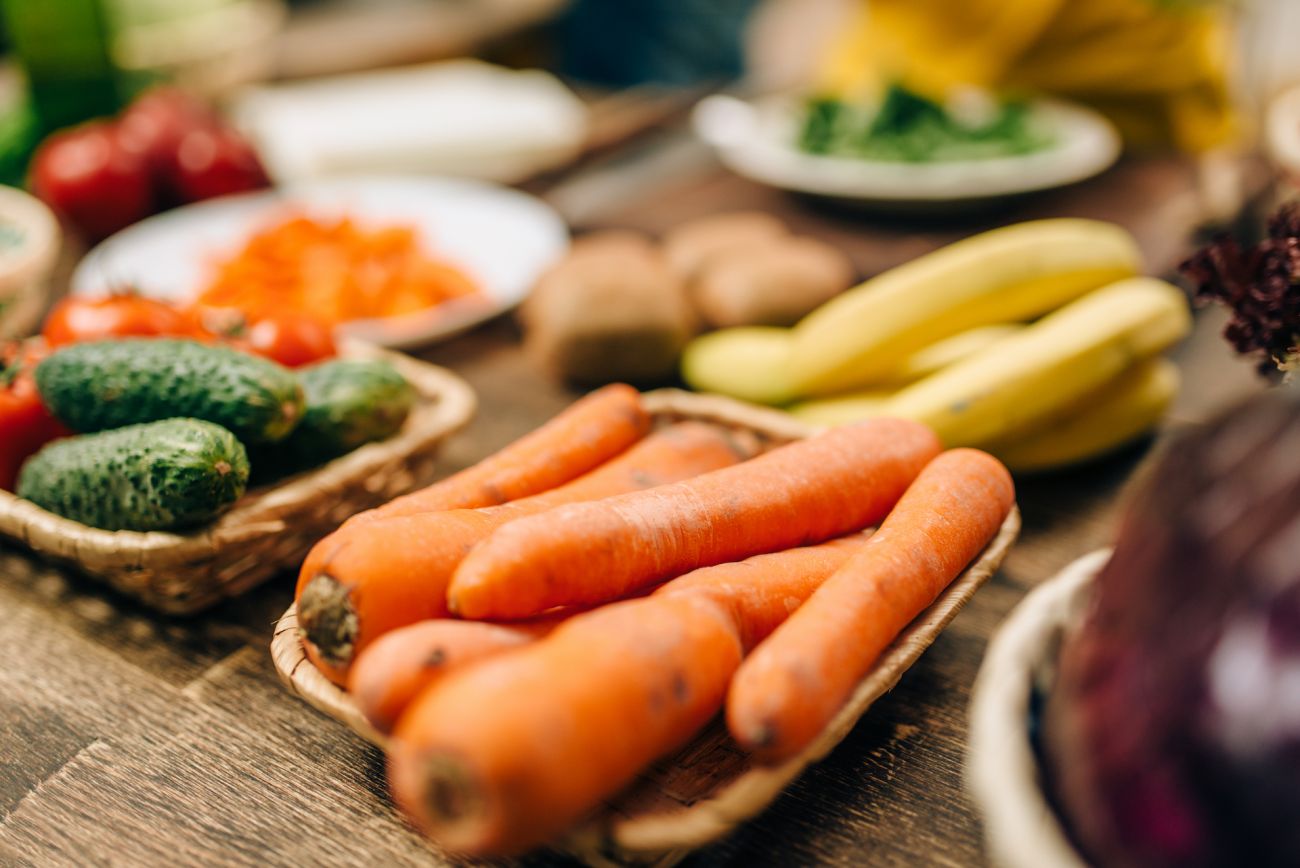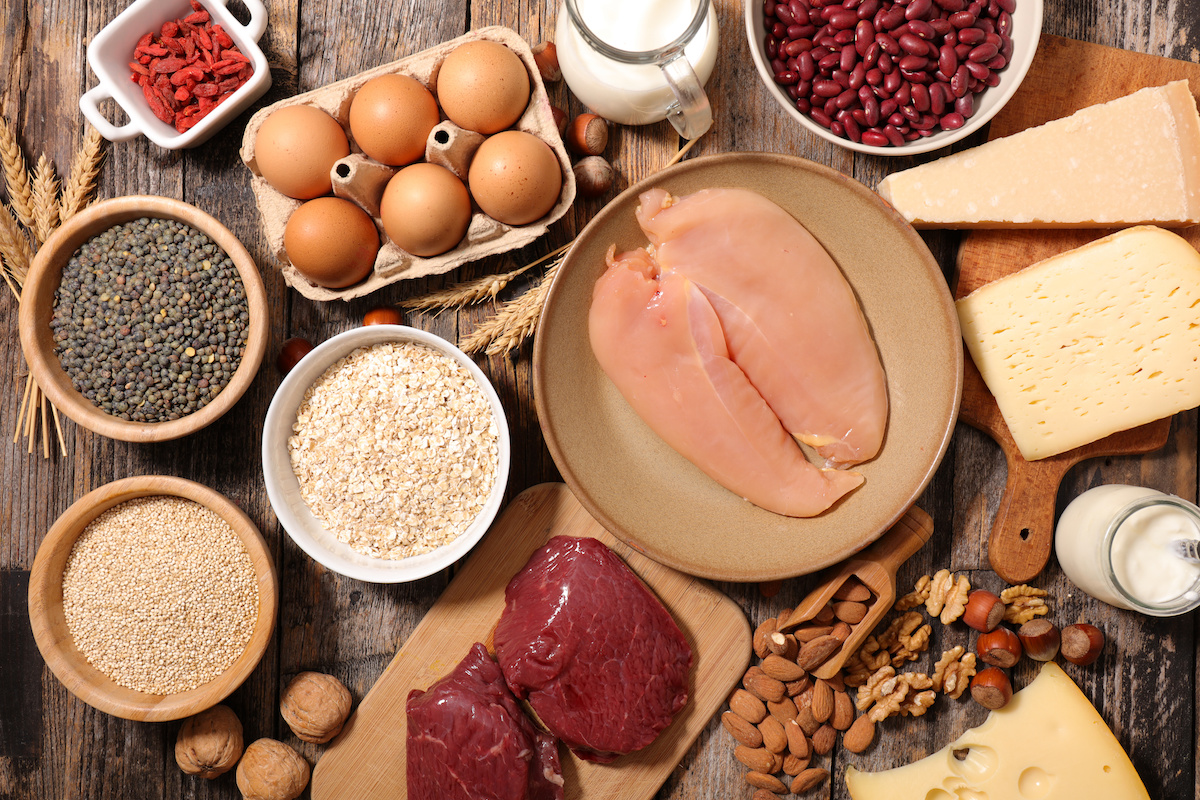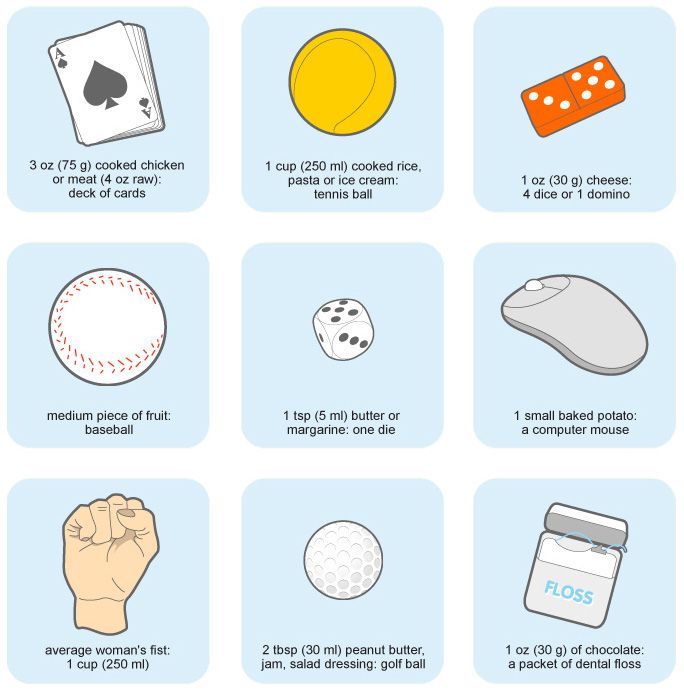A healthy pattern of eating
Your overall dietary pattern is important for cancer survivorship. It’s not one food, or even a whole group of foods that makes a difference. It’s the combination of many different nutrients – working together – that offers the best protection. If you feel well and your doctor has not restricted your diet, focus on choosing food and beverages that are in line with the current Dietary Guidelines for Americans.
The general ranges of servings per day for most adults (based on a 1600-2200 calorie diet) are:
- 2-3 cups of vegetables
- 1-2 cups of fruit
- 5-7 servings of grain-based foods (at least half should be whole grain)
- 2-3 servings of dairy foods (fat-free or low-fat milk, yogurt, cheese)
- 3-4 servings of protein foods (lean meat and poultry, seafood, eggs, nuts, legumes such as beans, peas, and lentils)
- 5 teaspoons liquid oils (olive, vegetable, canola, sunflower)
- Foods low in sodium (salt)
- Water instead of sugary drinks
Keep in mind that individual energy needs vary, and the number of servings needed from each group is based on your own energy needs. The following are a few tips to help you on your journey to healthy eating.
Stock Up – Fill your pantry, fridge and freezer with healthful options that make quick meals easy and are affordable and convenient to have on hand. Consider products like canned and frozen fruit, vegetables, and seafood.
Plan Ahead – Make a list before going to the grocery store based on meals you will make for the week. It may help to try using themed nights like “Meatless Monday” or “Taco Tuesday”. Plan to make enough for leftovers. If you freeze leftovers in single- or family-sized servings, you’ll have ready-made meals for another day.
Set Small Goals – Take small steps towards healthier habits that last, rather than trying to overhaul your diet overnight. Make sure your goals are realistic based on your personal situation and then build on the successful changes that you make.
Overall, this pattern of eating means putting more plant foods on your plate and fewer animal foods. This does not mean that you have to follow a vegetarian or vegan diet, or completely give up any of your favorite foods. The AICR recommends that plant foods such as fruits & vegetables, whole grains, legumes (like beans, peas, and lentils), nuts and seeds fill up 2/3 or more of your plate. The other 1/3 or less can be for seafood, poultry, low-fat dairy, lean red meats and other animal foods.
Visit www.aicr.org/new-american-plate for additional information and recipes!
Phytochemicals
One of the many reasons to fill your plate up with plant foods is to include phytochemicals in your diet! Phytochemicals are vitamins and other substances found naturally in plant foods. While no single phytochemical can protect you from cancer or any other disease, some phytochemicals may defend against potential cancer-causing agents or stop cancer cells from reproducing.
Eat a Rainbow
The best way to get a variety of protective vitamins, minerals, and phytochemicals is to eat a rainbow of colorful fruits and vegetables! Deep, bright colors often indicate high levels of these compounds. Remember, fresh, frozen, and canned fruits and vegetables all count! When choosing canned fruits and vegetables, look for options that are packed without added sugar or sodium.
Fiber
Fiber is another benefit of plant foods! The USDA Dietary Guidelines recommend Americans eat at least 28 grams of fiber per day. Fiber is found in all whole plant foods, but not animal foods. Fiber can help protect against colorectal cancer, and it can also help maintain healthy digestion, curb hunger by helping you feel fuller longer, and help with weight management.
Calorie Density
Plant foods are usually low in calories, which means you can eat more of them without consuming too many calories. Foods such as vegetables, fruits, whole grains and legumes have fiber and water to help fill you up. A pattern of eating including these foods can help you manage your weight for cancer protection.
High calorie-dense foods include fried foods and processed foods like snacks, candy and cookies. Aim to eat less of these foods since they are high in calories, often high in fat and/or sugar, and low in cancer-protective fiber and nutrients. Some plant foods are calorie dense but are also nutritious. These include nuts, seeds, and avocados. It is beneficial to include these foods in the diet because they are a good source of healthy fats our bodies need, but to be mindful of portion sizes.
Whole Grains
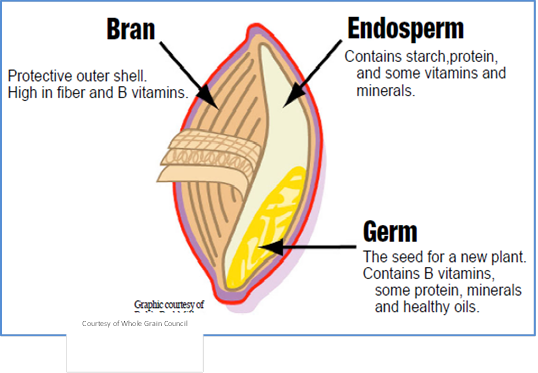
Choose whole grain foods – such as brown rice, oatmeal, and quinoa as well as whole grain breads, pastas and wraps – more often. These foods are made from the entire grain kernel which includes the bran, the germ, and the endosperm. The bran and the germ provide most of the grain’s fiber, vitamins, minerals, and phytochemicals. When grains are processed and refined, the bran and the germ are taken out. Limit heavily processed and refined grain foods such as all-purpose white flour, white breads, baked goods, and candies.
Choose Healthy Fats
Fats are essential to overall health. There are different types of fat, and some are better for the body than others. Aim to eat unsaturated fat – found in fish, nuts, avocados, and liquid oil – more often and use saturated fat less often. To remember which fats are saturated fats, think S-A-T. “S” = Solid at room temperature (e.g., butter, lard, “A” = Animal source (dairy fat, marbling in a steak) and “T” = Tropical oil (coconut or palm oil).
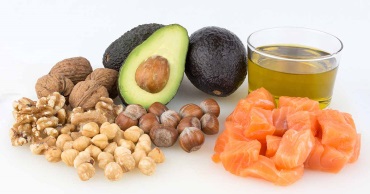
Trans fats are found mostly in processed foods and come from partially hydrogenated oils. These fats raise our cholesterol levels. Avoid trans fats whenever possible. Due to government regulations, trans fats from partially hydrogenated oils were phased out of the food industry in 2018. Most manufacturers have already removed this ingredient from their products.
There is strong evidence showing an increased risk of colorectal cancer with increased consumption of red and processed meat. According to the AICR, if you eat red meat, you should limit the amount you eat to less than 18 ounces (cooked) of red meat per week and eat little if any processed meat. Examples of red meat include beef (such as steak or burgers), pork, and lamb. Bacon, ham, hot dogs, and most deli meats are examples of processed meats.
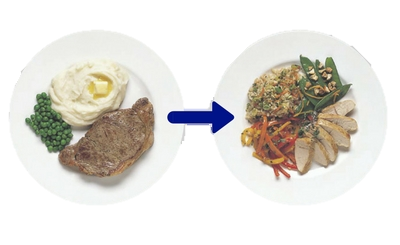
Remember that meat doesn’t always have to be the center of the plate but can be used more like a side dish or a garnish, such as small portion of steak on top of a salad. Remember to fill up two thirds of your plate with plant foods first, which leaves less room on your plate for red meat. For other meals, swap red or processed meat out for fresh roasted poultry or fish. Consider making some meals vegetarian and including beans, nuts, and whole grains!
Portions have expanded over the years, so it is important to be aware of the amount of food you are eating. If you are trying to lose weight, try gradually reducing portion sizes. Measuring out your food before you eat and drink can help you visualize standard portion sizes and compare to what you would typically serve yourself. Below are some additional tips for managing portions.
- Eat a single portion off a plate instead of munching out of a bag or large bowl.
- Avoid distractions – such as TV, cell phone, or tasks around the house – while you eat.
- Use smaller glasses, bowls and dishes.
- Eat slowly and mindfully – focus on what you are eating and use all of your senses to appreciate the food.
- When eating out, share a meal with a friend or plan on taking half home.
There is strong evidence from scientific studies linking consumption of “fast foods” and processed foods high in fat, starches and added sugars to increased risk of weight gain, overweight, and obesity. Studies have shown those limiting consumption of these “fast foods” and highly processed foods, and instead choosing more whole grains, fruits and vegetables for meals are more likely to achieve and maintain a healthy weight.
Sugary drinks – such as soda, sweetened iced tea, lemonade, energy drinks, sports drinks, and some specialty coffee-based beverages – contribute to weight gain and health risks. They are high in calories, but don’t make you feel full or provide any beneficial nutrients.
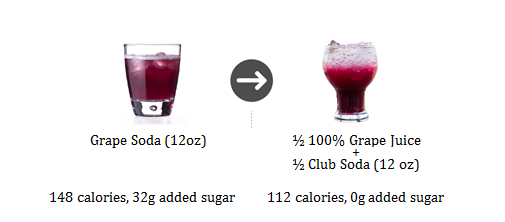
Water is the best option for everyday hydration. If you don’t like plain water, try sparkling water or unsweetened flavored water. Make your own flavored water by adding citrus fruit or berries and herbs like mint leaves. Unsweetened tea or coffees are also good options.
Snacks are a great way to fill in nutrient gaps throughout the day and sustain your energy in between meals. If you are watching your weight, snack only when you are hungry and stop before you feel full. Follow the same guidelines for snacks as for meals – that means lots of fruits and veggies, whole grains, nuts and seeds, and lean proteins. Keep these foods ready to go so they are an easy option to grab during the day.
For example:
- Make your own trail mix with nuts and seeds and portion it out into individual baggies to have on hand in the car.
- Keep whole fruit like apples and bananas on hand for an easy portable snack.
- Wash and chop veggies ahead of the time for a grab and go snack. Try a dip that will provide some nutrients, such as hummus or nut butters.
